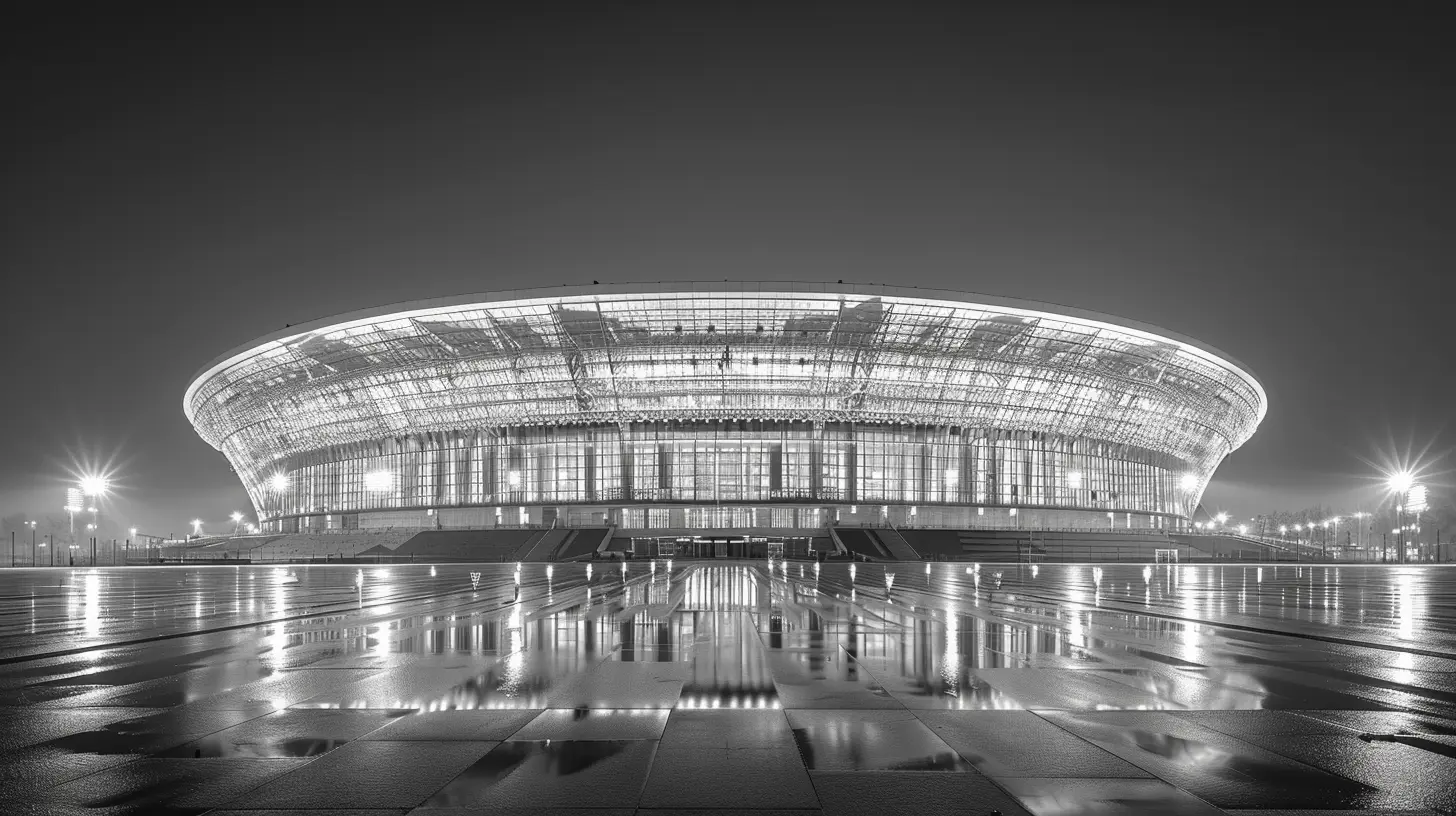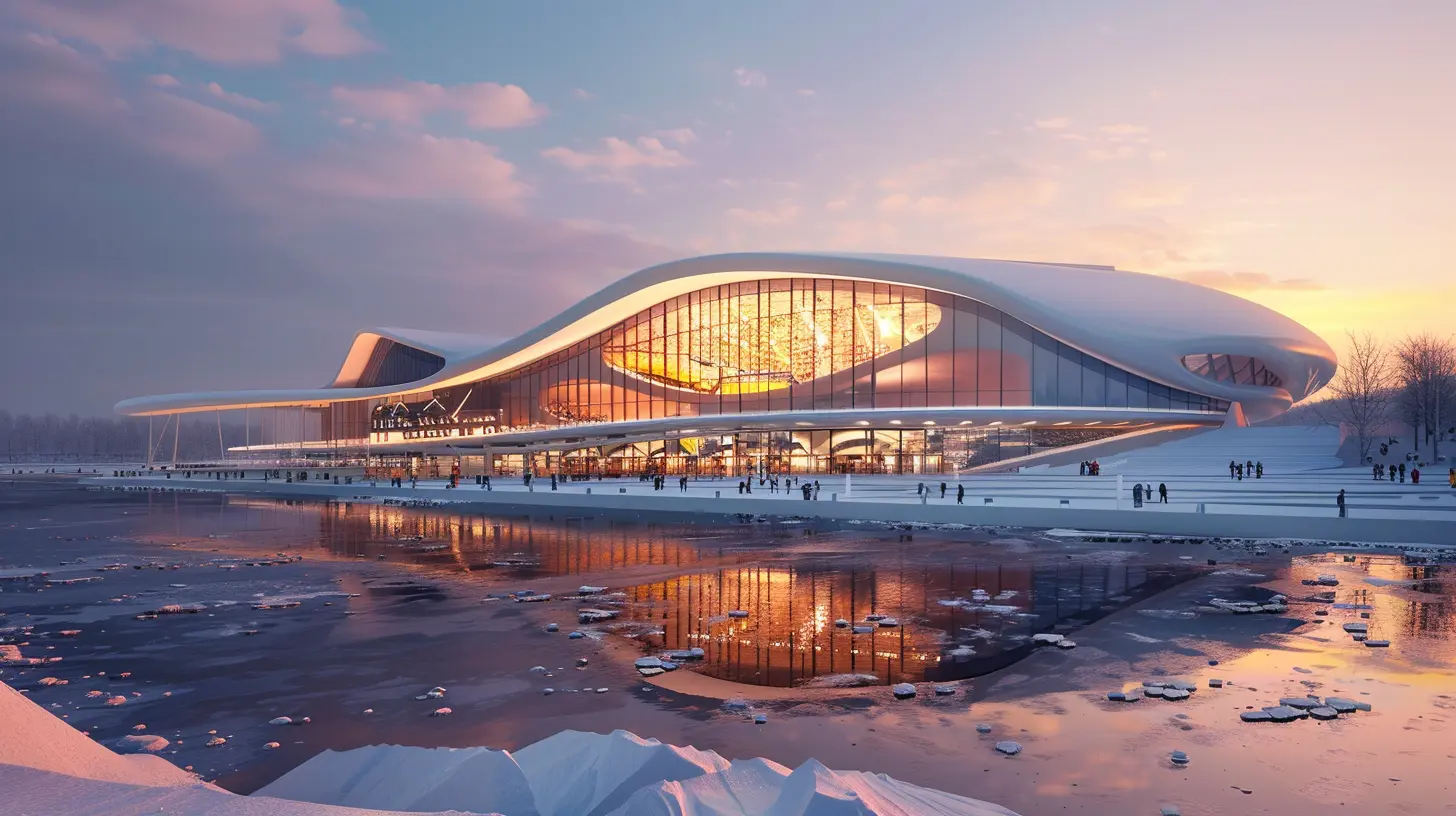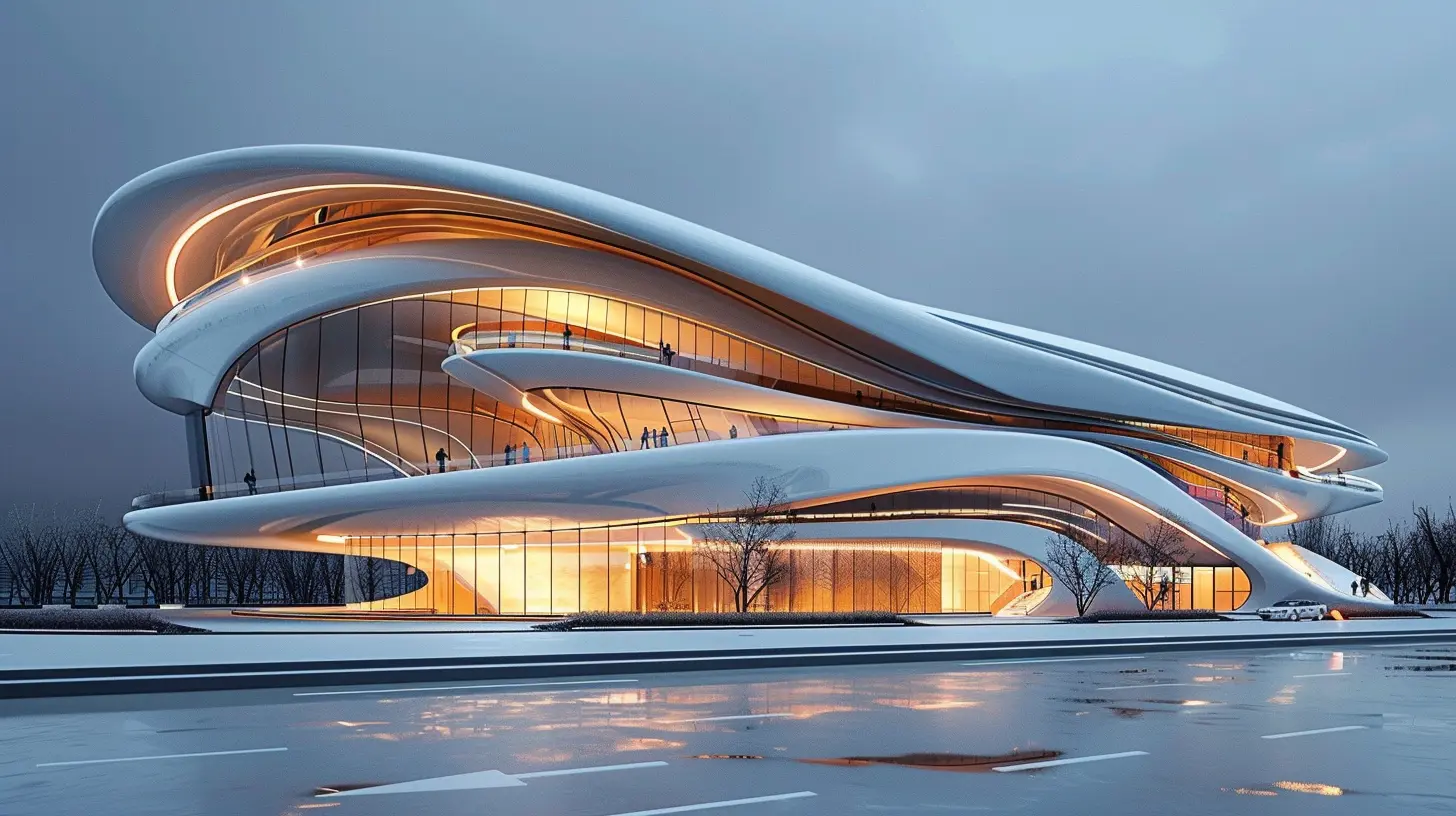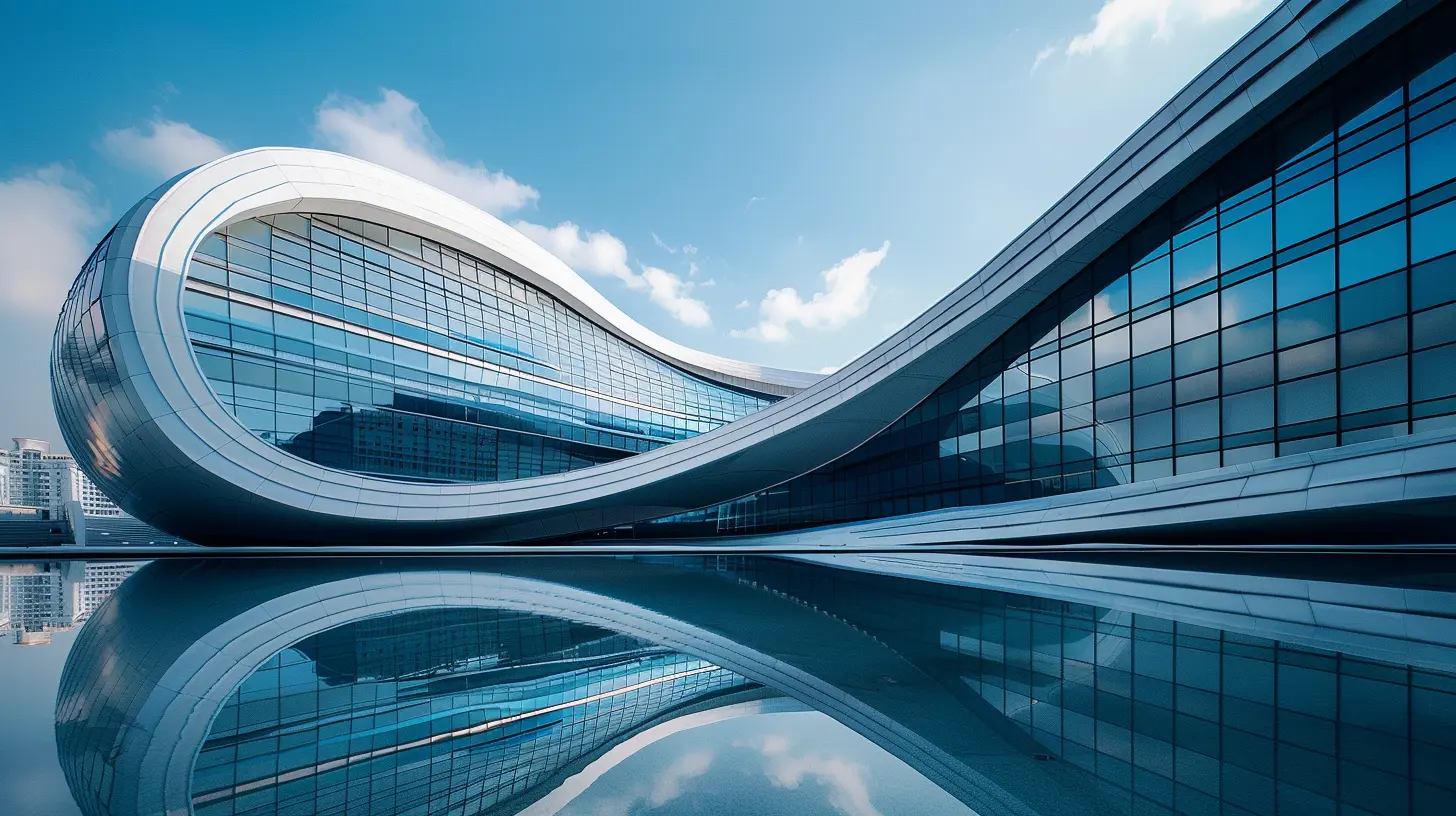The Role of Architecture in Enhancing Fan Engagement
6 June 2025
Alright, folks—let’s talk about sports stadiums. No, not just the turf, the bleachers, or the overpriced nachos. I'm talking about the grand, steel-and-concrete cathedrals where we scream at referees like they can hear us (they can't), cry over a missed penalty, and high-five total strangers like we’ve known them since kindergarten. Yes, architecture. That really big, expensive thing that holds us all together—literally and emotionally—when the game is on.
So what’s the big deal? Isn’t architecture just about keeping the fans dry when it rains and making sure the place doesn’t collapse during a particularly enthusiastic touchdown dance? Oh, dear reader, brace yourself. Turns out, architecture plays a HUGE role in how engaged we are during a game. Like, it can make or break your experience – whether you’re there to cheer or just to update your Instagram story with “#GameDay”.

Stadiums: Not Just Giant Concrete Bowls Anymore
Once upon a time, sports venues were glorified cereal bowls made of cement. As long as the fans had a place to sit and a decent view, everyone was happy... right? Wrong.Today’s fans? We're picky. We want Wi-Fi strong enough to livestream our reaction when our team fumbles. We want craft beer on tap, sushi stalls, and maybe a rooftop garden. So architects had to get creative. They turned these once-cookie-cutter stadiums into immersive, fan-centric experience zones.
Because let’s be real—if you're going to pay half your paycheck for a ticket, the least you deserve is a retractable roof and an LED screen the size of your apartment complex.

The Fans Deserve a Show—and That Starts Before the Game
Arrival Experience: Love at First Parking Spot
If the first 30 minutes of your game day include getting lost in a parking labyrinth and hiking 3 miles to the gate, your mood’s already in the toilet. Clever stadium architecture changes that.Designers now focus on the approach. Think easy access, lighted pathways, interactive fan zones, scenic walkways, and layouts that don’t require a Ph.D. in cartography to navigate. Some venues even let fans enter through grand plazas with live music, food trucks, and activities. It’s like Coachella, but with more jerseys and less glitter.
External Aesthetics: Yeah, It Actually Matters
Oh, don’t roll your eyes. We’re all shallow creatures sometimes. A stadium that looks like a spaceship about to orbit Earth? Sounds like a place you’d want to check out. One that looks like a leftover concrete bunker from the Cold War? Not so much.Modern architects are turning stadiums into Instagram-worthy landmarks. Why? Because fan engagement isn't limited to inside the stadium anymore. It starts days before—when someone posts a selfie in front of the glowing atrium or the massive digital waterfall outside the arena gates. It's all part of the experience!

Inside the Magic Bowl: Where Architecture Meets Emotion
Acoustics That Rattle Your Ribcage
Let’s talk noise. You ever been in a stadium so loud it vibrated your soul? That’s not just 60,000 people screaming. That’s architecture doing its thing.Designers actually manipulate the shape and material of stadiums to trap sound and amplify crowd noise. Think echo chambers, but with more face paint and nacho cheese. This isn’t just a coincidence—it’s a science. Because when you FEEL the crowd, your excitement skyrockets. Even if the team sucks, the roar makes you feel like you're part of something epic.
Seating Design: Not All Bleachers Are Created Equal
Once upon a time, “nosebleed seats” were just a fact of life. Now? Not acceptable. Stadiums today are designed so that even the furthest seats have decent views. Steeper angles, better sightlines, comfy chairs… it's like upgrading from economy to economy-plus. You still don’t get champagne, but at least your knees aren’t in your throat.And let’s not forget the suites and VIP lounges. Oh yes, the architectural marvels where fans sip Pinot Noir while watching the game from their climate-controlled bubbles. Not exactly the “common man” experience, but hey, it’s engagement nonetheless.

Technology + Architecture = Fan Engagement on Steroids
Smart Stadiums: Because Apparently, Our Phones Are More Important Than the Game
Why watch the quarterback when you can watch him in 4K on your phone… while sitting in the stadium?Modern architecture seamlessly integrates tech—giant video boards, in-seat ordering, real-time stats, interactive fan apps, and lightning-fast Wi-Fi. It’s like someone said, “How can we make this building smarter than our fans?” and then went ahead and did it.
But in all seriousness, this tech-forward approach keeps fans connected, informed, and—let’s be honest—mildly distracted. And when you're engaged with the game in more ways than one, you're more likely to stick around (and spend money).
Lighting That Dazzles (and Doesn’t Blind You)
LED lighting isn’t just for dramatic player entrances anymore. It’s used strategically to enhance the game atmosphere. Smooth transitions, color-changing effects, and dynamic light shows during halftime make fans feel like they're at a rock concert instead of a rugby match.Bonus: it keeps the energy up even when your team is down by 30.
The Social Experience: Architecture That Encourages Mingling
Communal Spaces: Because Fans Like to Complain Together
Smart stadiums don’t just focus on the field. They create spaces where people gather, chat, eat, drink, and take selfies. Think beer gardens, open-air lounges, rooftop bars, and selfie zones (yes, that’s a real thing now). Architects design these intentionally to promote social interaction.Because let’s face it—half the fun of a live game is complaining with your fellow fans about how the coach has lost his mind and should probably be replaced by your uncle Bob from the sofa.
Accessibility: Fan Engagement for Everyone
Let’s not forget the role architecture plays in making stadiums inclusive. Proper design ensures everyone, from wheelchair users to parents with strollers, can participate in the madness without feeling like they’re on an obstacle course. Wider corridors, ramps, elevators, and well-placed amenities make sure no one’s left out of the fun.
Aesthetics vs. Functionality: Can Architecture Be Both Pretty and Smart?
Spoiler alert—it can.Designers are now striking the perfect balance between looking good and functioning brilliantly. Take the Mercedes-Benz Stadium in Atlanta, with its LED-covered retractable roof that looks like an alien flower opening. Beautiful? Absolutely. Functional? You bet.
Beauty gets people through the doors. Functionality keeps them coming back.
Sustainability: Because Saving the Planet Might Just Get You More Fans
Believe it or not, some fans care if your stadium is killing the planet. Shocking, I know.That’s why architecture today includes green roofs, solar panels, rainwater harvesting, and sustainable materials. Not because teams have suddenly become eco-warriors, but because sustainability is a legit selling point.
Fans are more likely to engage with—and be proud of—a stadium that reflects their values. That means less concrete jungle, more green glory.
Emotional Architecture: The Unsung MVP
Good architecture doesn’t just hold fans—it holds their emotions.From grand entryways that make you feel like a gladiator entering the coliseum to open concourses that let you catch the action while grabbing a slice of pizza, everything is designed to stir feelings. Excitement. Pride. Nostalgia. Hope. Misplaced confidence.
When a stadium taps into your feelings, you don’t just attend—you belong.
So... Is Architecture the Secret Sauce to Fan Engagement?
Let me put it this way. Imagine watching a game in a half-empty, echoey warehouse with sticky floors and no toilets. Now imagine the same game in a dazzling, high-tech, fan-friendly arena with music, community vibes, and a seat you don’t need a chiropractor after using.See the difference?
Architecture isn’t just background noise. It’s the stage, the lighting crew, and the support cast. It’s the thing that takes your game-day experience from “meh” to “heck yes!”
So next time you’re screaming your lungs out from the stands, take a second to appreciate the masterpiece of design around you. Because that place? It’s not just a stadium. It’s a monument to the power of architecture... and your ability to yell like a lunatic for three hours straight.
all images in this post were generated using AI tools
Category:
StadiumsAuthor:

Umberto Flores
Discussion
rate this article
3 comments
Daria Mendez
What a fantastic read! The synergy between architecture and fan experience is truly inspiring. Excited to see how innovative designs continue to elevate our game days!
June 11, 2025 at 10:19 AM

Umberto Flores
Thank you! I’m glad you found it inspiring. Exciting innovations in architecture will undoubtedly enhance the fan experience even further!
Nyxaris McConnell
What an intriguing perspective! I never considered how architecture could influence fan engagement. Do certain stadium designs actually impact the atmosphere and energy during games? I’d love to hear more about specific examples where innovative architecture has transformed the fan experience!
June 6, 2025 at 12:36 PM

Umberto Flores
Absolutely! Stadium designs like the intimate seating arrangement of Borussia Dortmund’s Signal Iduna Park and the open-roof concept of AT&T Stadium enhance atmosphere and energy, fostering a more engaging fan experience. These innovations create a sense of connection and excitement that elevates the game-day experience.
Jane McKinstry
Who knew stadiums could be fan magnets? It's like they’re saying, 'Come for the game, stay for the Instagram-worthy selfies!' Architecture really knows how to throw a party!
June 6, 2025 at 4:53 AM

Umberto Flores
Absolutely! Stadiums are designed to create an immersive experience that goes beyond the game, blending stunning architecture with social engagement. It's all about making memories!



